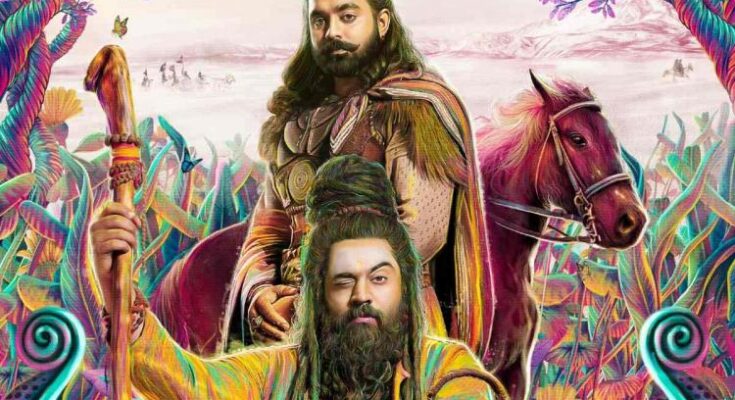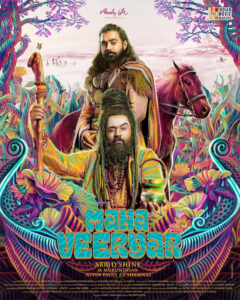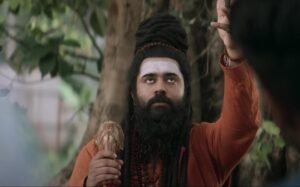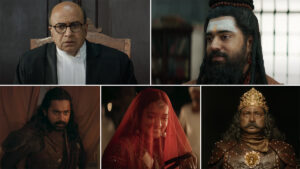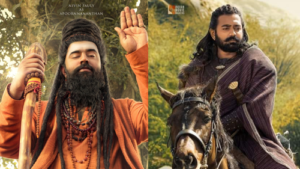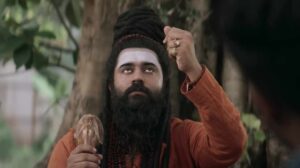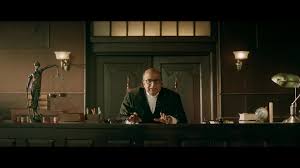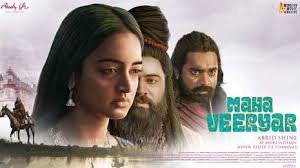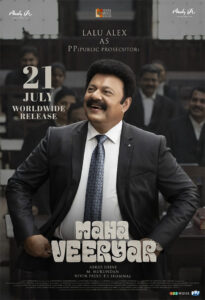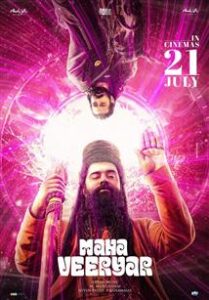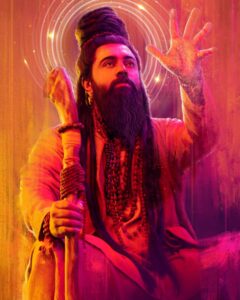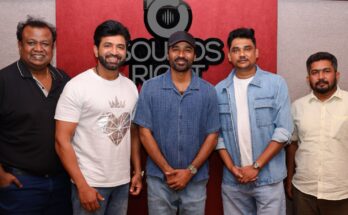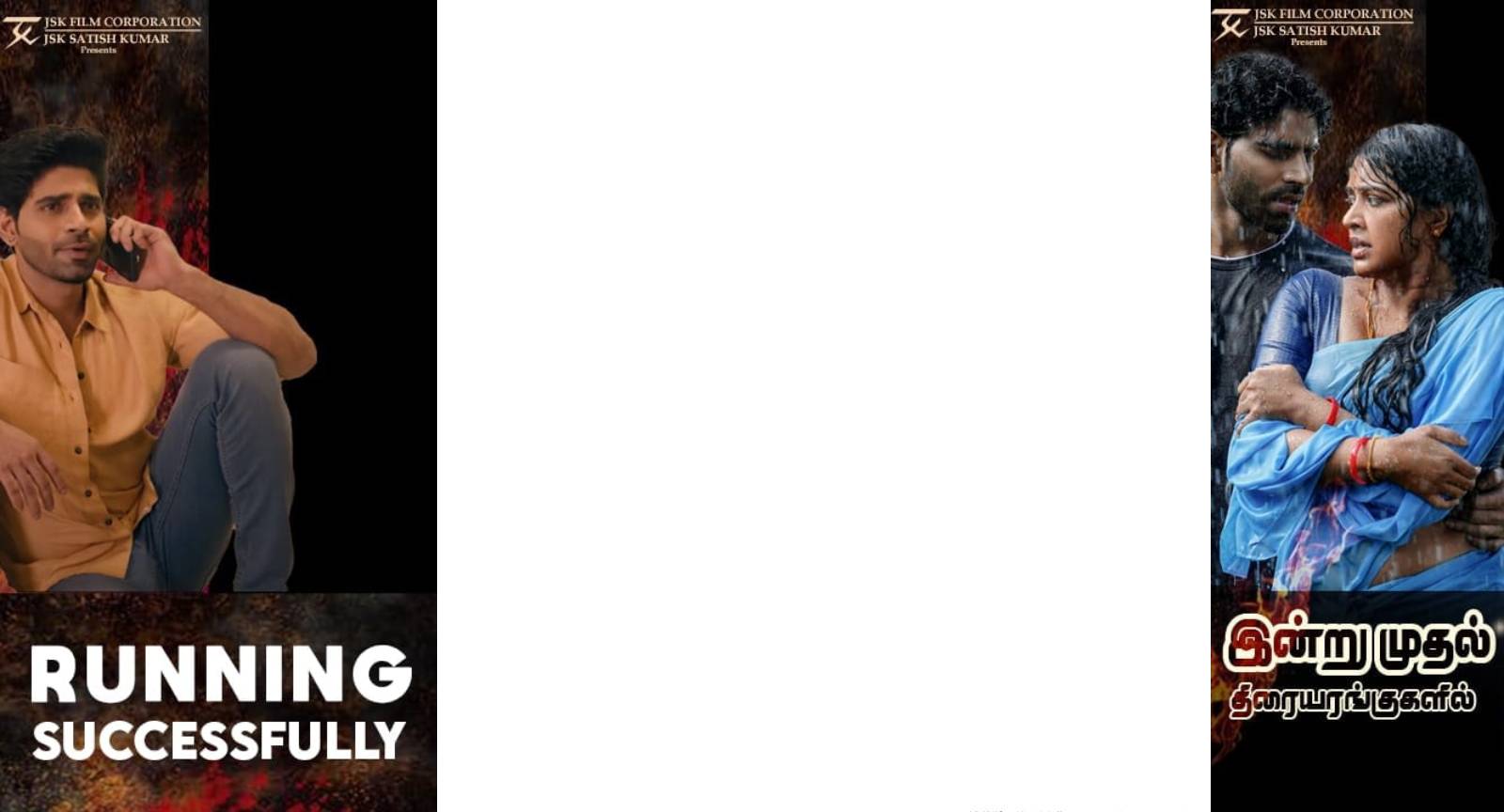Mahaveerayar (Dab) Tamil Movie Review
Cast-;
Nivin Pauly , Asif Ali , Shanvi Srivastava , Lal , Siddique , Mallika Sukumaran , Lalu Alex , Vijay Menon , Major Ravi
Krishna Prasad , Kalabhavan Prajod , Sudheer Paravoor and others .
Crew-;
Presenting The Official Teaser Of Mahaveeryar Directed By Abrid Shine. Director : Abrid Shine , Producer : Nivi n , Pauly, P.S Shamnas, Abrid Shine , Story : M Mukundan , Executive Producer : Mohandas Damodharan , DOP : Chan dru Selvaraj , Editor : Manoj , Music & Bgm : Ishaan Chhabra , Sound Design : Vishnu Govind, Sree Sankar (sound factor) , Re Recording Mixer : Vishnu Govind (sound factor) , Production Controller : L B Syamlal , Produ ction Designer : Anees Nadodi , Costume Designers : Chandrakant Sonawane, Melwy J , Makeup : Libin Mohanan , Chief Associate Director : Baby Paniker , VFX Supervisors : Nidhin Ram Naduvathur, H Monesh , DI : Poetic , Colorist : SrikVarier , Lyrics : B K Harinarayanan, Assanu Anna Augustine , Finance Controller : Agnivesh , Stills :
Mithu Siva, George Jolly, Shaheen Thaha , Line Producer : Bobby Pradhan(Rajasthan) , Production Coordinator : Maju Mathew ,Title Design : Tuney John ,(24AM) , Teaser ,Trailer : Anish Mathew, Jith Joshie, Associate Directors : Sethunath Pa dmakumar, Sanvin Santhosh, Jiju Antony , Associate Cameraman : Dinesh .K , Associate Art Dire ctor : Sujith Koll anandiyil , Associate Director & Post Production Coordinator : Anju Balachandran , Assistant Directors : Arun dev, Vishnu Shaji, Jayashree Sivadas, Shivangi Mathew , Assistant cameraman : Kaleeswa ran,Li gin Eldho Elias,Bala J Chandran,Prathap Keerthi,J D Arun , PRO : Yuvaraaj , Designs : Yellow tooths , Subtitles – Vivek Ranjit , Music On: 123Musix , Digital Partner: Avenir Technology , and others .
Story-;
The film begins with the introduction of ‘Rudra Mahaveera Ugrasena Maharaja’ played by Lal. ‘Ugrasena Mahar aja’ is a king suffering from chronic back pain. The ‘Ugrasena Maharaja’ asks the minister to find a suitable wo man. Then the minister played by Asif Ali sets out in search of such a woman. Director Abrid Shine is amazing in the narration of ‘Mahaveerya’ which is also a time travel film. Screenwriter-turned-director Abrid Shine has ble nded the different eras with great skill. Most of the scenes take place inside the courtroom, but the witty dialog ues, which are precisely delivered, help to keep things from getting boring. The performance of each actor in the movie reflects exactly what the director wants. Nivin Pauly as the monk makes us laugh and amaze. Nivin Pauly’s mannerisms are well suited to his role. Asif Ali’s minister character and Lal’s Maharaja character stand out. The expressions of Siddique as the Magistrate and Lalu Alex as the Public Prosecutor help to entertain. Even the technical aspects of the courtroom are such that the dialogues in those scenes are interesting. Then Nivin Pauly is introduced as a saint from the past. He arrives in court for a trial. What happens next forms the rest of the story.
Watch The Tailor -;
Movie Review-;
Based on M Mukundan’s story, Abrid Shine’s Mahaveeryar is unlike any film you’ve seen before. It is a true ge nre-bender that combines multiple timelines and worlds to pit two forces against each other—time and power. It is also an innovative (AF) courtroom drama that places a case from the 18th century in the context of the moder n Indian legal system, with the Constitution, a magistrate, and prosecutors, all coming together in service of an old King with a pressing issue. Mahaveeryar is absurdist fiction, a satirical time travel flick, a fantasy courtroom period drama and in fact a mix of all. Basically, if you try to slot the film under a particular category, you might miserably fail because Abrid Shine breaks every rule possible in this genre-bending picture to visualize his whi ms and fancies from paper to big screens.
This King’s (Lal) issue is that he cannot stop his hiccups no matter what he tries. All the best doctors from his kingdom have tried to put an end to it but none have even come close. The King cannot sleep in this cycle of ne ver-ending trips to the bathroom, followed by drinking even more water, and when the King is not at peace neit her is his kingdom. Producer and actor of Mahaveeryar, Nivin Pauly, is the common point between the two worl ds of the film, one from contemporary times and the other from the 18th century.This is the context we get as we move from the 18th century to the present day with the only connection being a saint named Apoornananda (Ni vin Pauly), who seems to be able to travel across time; although from his experience it doesn’t look there’s a lot of evolution that takes place. In what begins like a twisted fairy tale, we see the film move into the four walls of a courtroom that’s hearing four different cases at once: a divorce settlement, a harassment, a theft case, and the aforementioned case where a civilian takes on the King.
The story revolves around a godman Apoornananthan (Nivin Pauly) who defends himself in a case where he is ch arged with robbing a temple idol. Through his defence, he draws parallels to another case involving a King (Lal) with a rare illness- persistent hiccups. The film gives a satirical take on societal bias, prejudice, abuse of power an d how justice, many times, is rendered merely based on facts and numbers over emotions. Most of the dark hum our in the first half works, ably supported by the exceptional performances from Siddique, who plays a judge and Nivin Pauly who reigns as a master of time, both past and present.At least until we arrive at the King’s case at th e court later on, the film plays like a stoner comedy covering gags that are absurdly funny. This includes a man w ho pays his ex-wife her alimony in one rupee coins and the case of an idol getting stolen from a temple where b oth the priest and the authorities have a questionable history.
From the looks of it, the proceedings seem just and modern and it gives us the illusion that everyone is equal no matter where they come from. Shanvi Srivastava’s character touches upon the Stockholm syndrome and the wa y she is treated in the film brings the brutal reality to the forefront, of how, even when a woman has an opportu nity to time-travel to the millennium, she still lands up in a misogynistic world.It also makes one wonder, ‘Time ce rtainly changes but a woman’s plight never does’. Though these intentions are gold, the execution of the scene is disturbing with Shanvi’s character disrobed in the middle of the court. Could the director have sold the same po int without such graphic visuals? I truly believe, yes.But then the film only really begins after the interval with a sensational sequence where you literally get to see two worlds collide.
The courtroom transforms into what looks like a king’s courtyard with a throne placed directly opposite the ma gistrate. In one striking image, we see this seat of democracy looking straight at The seat of the monarchy to co mplete a visual oxymoron. How does such a legal system hold up when the King himself appears in court. Can the King ever be held accountable for his crimes or when presented with absolute power, does the court get absol u tely corrupt?However, the set design, music, and photography are on point. Chandru Selvaraj’s cinematography is seamless in blending the color schemes of both the timelines, perfectly capturing the royal looks from the past and natural visuals in the present.This is where the film turns into an allegory. In fact, it’s a film that forms fully only when you replay it in your head once it’s over.
It’s a film that’s likely to lead to several readings but what I found most fascinating is the way it gives you repe ated images that places a statue of Lady Justice right next to a central female character. Dressed in white and with her eyes closed for a long period of time, the silhouette of this character is the spitting image of the statue itself.These images get a lot wilder when the focus shifts from her need for justice to what the King needs. So when the debate in the courtroom shifts, we get the visual of a room full of men arguing over what this woman must do for the King to be able to sleep again. When read differently, this image tells us that both women and justice are the first to lose out when patriarchy needs to be served. And when it underlines this by proposing that only a woman’s tears can bring back peace to this kingdom, it asks the viewer why he or she didn’t even consider the solution the film comes up with.
And the result is Mahaveeryar.All these vivid ideas being hurled at you can really feel frustrating just as it is fascinating. When these ideas coalesce, like they do in the last stretch, we feel like we’re being rewarded for more than an hour’s wait. Some ideas recede to the background when bigger ones are suggested and this again leaves behind a feeling of incompleteness. Long stretches from the beginning never come back later and there’s a lack of focus that makes the film a challenge to hold on to.But it’s also not a film you are supposed to get in one go. It challenges our notions of a genre even within fantasy and there’s not a single “hero” in sight. Between the stretches that barely reach you and those that absolutely blow you away, Mahaveeryar is a film that’s most brave when it’s most wacky.
This IS MY Personal Review So Please Go And Watch The Movie In Theaters Only
Written By- T.H.PRASAD -B4U-Ratting-3 /5
